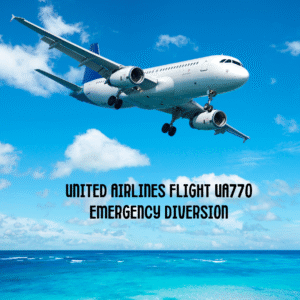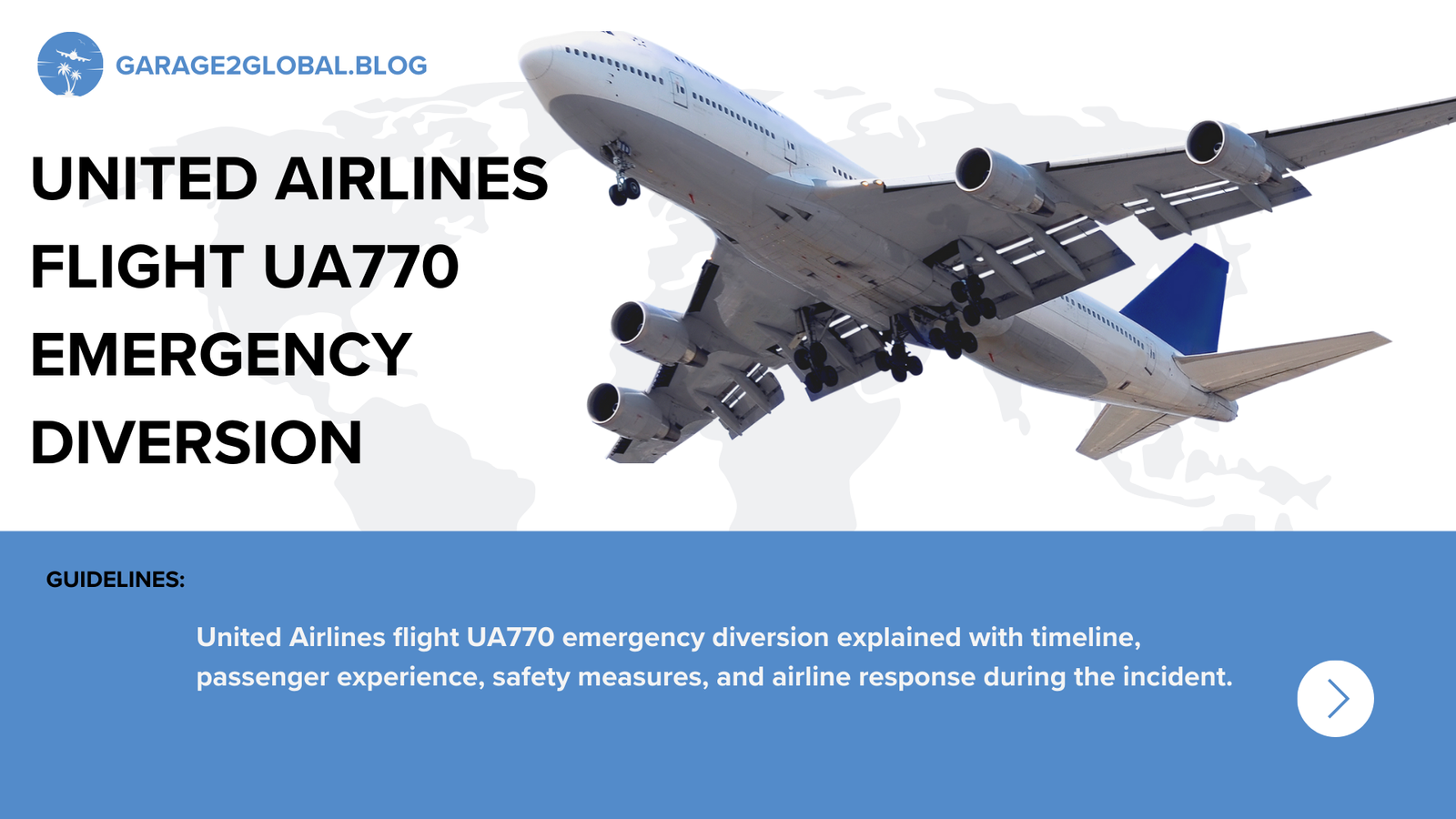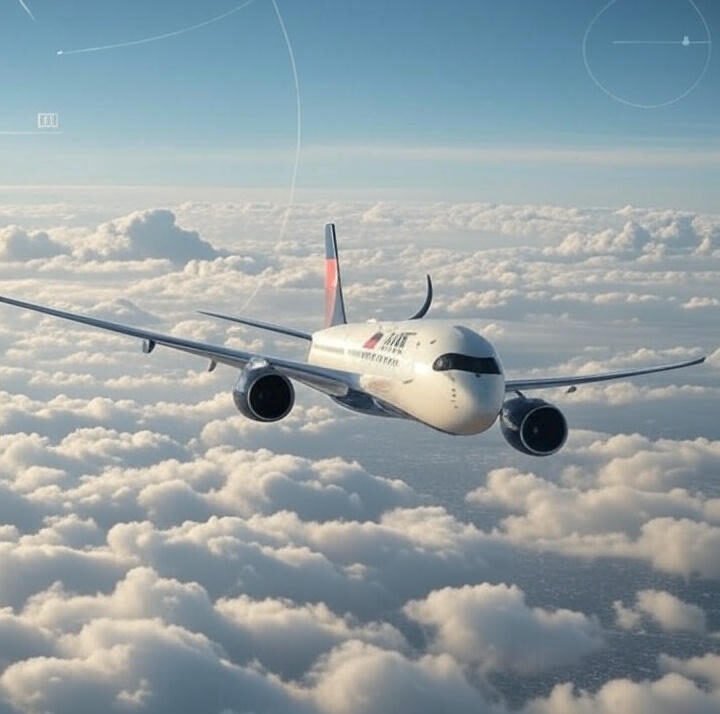Air travel is widely regarded as one of the safest and most efficient ways to move around in today’s world. However, unforeseen events can occasionally disrupt even the smoothest journey. One such event that captured widespread attention was the emergency diversion of United Airlines Flight UA770. This incident not only raised questions about what went wrong but also shed light on the efficiency, training, and resilience of both the airline crew and passengers on board. Understanding the complete story requires a detailed look at the flight timeline, the challenges encountered, and the experience of those who lived through it.
Background of Flight UA770
United Airlines Flight UA770 was a regularly scheduled route connecting its departure city with Chicago, one of the busiest aviation hubs in the United States. The aircraft was part of United’s modern fleet and typically carried business travelers, families, and tourists. On the day of the diversion, conditions seemed routine. The weather was favorable, airport operations were smooth, and boarding took place without notable delays. For passengers, it felt like just another standard flight until mid-journey when events took an unexpected turn.
The Moment Things Changed
Every flight is carefully monitored, from altitude adjustments to weather conditions and aircraft systems. However, during the journey of UA770, an unexpected situation led the cockpit crew to declare an emergency. This was the pivotal moment when what seemed like an ordinary trip quickly shifted into an extraordinary situation. The declaration of an emergency is not made lightly; it signals that the pilots have identified a problem significant enough to require immediate action and a potential diversion from the original route.
Timeline of Events During the Diversion
The timeline of Flight UA770’s emergency diversion unfolded in a series of critical steps. Soon after takeoff, the flight leveled out, maintaining a steady altitude and consistent speed. Midway through the journey, the cockpit crew became aware of an issue that required their attention. The crew followed protocol, assessing the problem and communicating with air traffic control. Just minutes later, the pilots declared an emergency and asked for clearance to divert the flight. Air traffic controllers quickly responded, providing guidance and clearing airspace to prioritize the flight’s safe arrival. The descent and approach were handled with precision, and the aircraft ultimately landed safely at an alternate airport.
Passenger Reactions Onboard
Inside the cabin, passengers experienced a wide range of emotions. At first, many were unaware of the severity of the situation. The cabin crew worked hard to maintain calm, providing reassurance while continuing with safety protocols. Some passengers reported feelings of anxiety, while others were confident that the experienced crew would manage the situation effectively. Parents comforted their children, frequent travelers remained composed, and first-time flyers found themselves relying heavily on the confidence displayed by flight attendants.
Communication from the Crew
Communication is one of the most crucial aspects of managing an in-flight emergency. On UA770, both the pilots and cabin crew made regular announcements to keep passengers informed. Although not every technical detail was disclosed, passengers were told enough to understand that the flight was diverting due to an emergency situation. This transparency helped ease fears, reminding passengers that the safety of everyone on board was the top priority.
The Landing at the Alternate Airport
Landing an aircraft during an emergency diversion requires careful coordination. For UA770, the descent toward the alternate airport was smooth and well-managed. Passengers could sense that the situation was serious, but they also recognized that the crew was handling it with professionalism. The moment the wheels hit the ground, a wave of relief swept through everyone on board. Applause and cheers erupted in the cabin, a sign of gratitude for the safe landing after moments of uncertainty.
Assistance After Landing
Once the aircraft was safely on the ground, the next phase involved ensuring the well-being of passengers. Emergency crews and ground staff were ready to assist as the plane taxied to its designated position. Passengers were provided with guidance on disembarkation and were met by customer service teams to help with rebooking and onward travel. Medical staff were also available to attend to anyone who felt unwell during the ordeal, although most passengers were simply shaken rather than physically affected.
The Role of Training and Preparedness
A remarkable part of the UA770 emergency diversion was how smoothly the crew executed their responsibilities. Pilots undergo rigorous training for exactly these scenarios, ensuring they can respond decisively under pressure. Cabin crews are equally trained in emergency procedures, from calming passengers to securing the cabin for an emergency landing. The effectiveness of this training was visible throughout the flight, as both passengers and crew remained organized even in moments of uncertainty.
Media and Public Reaction
As soon as news of the emergency diversion surfaced, it rapidly spread across social media platforms and major news outlets. Passengers shared their personal stories online, offering firsthand accounts of the event. The airline released official statements to provide clarity, while aviation experts analyzed the incident to explain what may have prompted the emergency declaration. Public reaction was a mix of concern and relief—concern about what went wrong and relief that everyone landed safely.
Lessons from the Incident
Flight UA770’s diversion highlighted several key lessons about modern aviation. First, it demonstrated the importance of robust training for pilots and crew. Second, it reminded passengers that while diversions can be unsettling, they are ultimately a safety measure designed to protect everyone onboard. Lastly, it showed the resilience of passengers, who trusted the crew and supported one another during the unexpected journey.
Passenger Experience in Retrospect
Many passengers later described their experience as a story they would never forget. While the flight caused stress in the moment, the outcome reinforced their trust in aviation safety standards. Some even admitted that they felt reassured knowing that airlines and crews could handle emergencies effectively. The experience bonded strangers, as conversations and shared relief created a sense of community among those who went through the diversion together.
Airline Response and Reputation

United Airlines’ handling of the UA770 diversion became a focal point for discussion. By providing prompt assistance, clear communication, and follow-up support, the airline managed to maintain trust among its customers. Such incidents, while rare, often shape how passengers view an airline’s reliability and care. United’s proactive approach in addressing concerns and assisting passengers played a key role in mitigating the negative impact of the diversion.
Broader Aviation Context
Emergency diversions are not unique to one airline; they are part of the broader world of aviation. Across the industry, airlines, airports, and regulators constantly work to ensure systems are in place to handle such scenarios. Flight UA770 serves as a reminder of the meticulous planning, communication, and cooperation required between pilots, crew, air traffic controllers, and ground teams. It underscores why aviation continues to be considered one of the safest industries despite occasional incidents.
Conclusion
United Flight UA770’s emergency diversion was an event that tested the preparedness of the airline and the patience of its passengers. Yet, it ended with a reassuring outcome: a safe landing and lessons learned. For passengers, the flight was a reminder of how fragile yet resilient air travel can be. For the airline, it was an opportunity to demonstrate professionalism, transparency, and care. Incidents like this reaffirm the importance of safety measures, crew training, and clear communication. In the end, the diversion of UA770 became more than just a news headline—it became a story of calm under pressure, trust in aviation systems, and gratitude for a safe return to the ground.
FAQs
Why do airlines divert flights like UA770?
Airlines divert flights primarily for passenger safety. Reasons include medical emergencies, mechanical issues, severe weather, or air traffic restrictions. Safety always comes first.
How do passengers get updated during a flight diversion?
Passengers usually receive updates through the captain’s announcements, crew communication, or airline apps that track live flight status.
Does a flight diversion affect connecting flights?
Yes, diversions often delay passengers with connections. Airlines usually rebook affected travelers on the next available flights.
Who decides when a flight diversion is necessary?
The captain makes the final decision, often in coordination with air traffic control and the airline’s operations team.
Are passengers compensated for diversions?
Compensation depends on the cause. For weather- or safety-related diversions, airlines may not offer refunds, but they usually provide assistance like meals or accommodations if needed.




